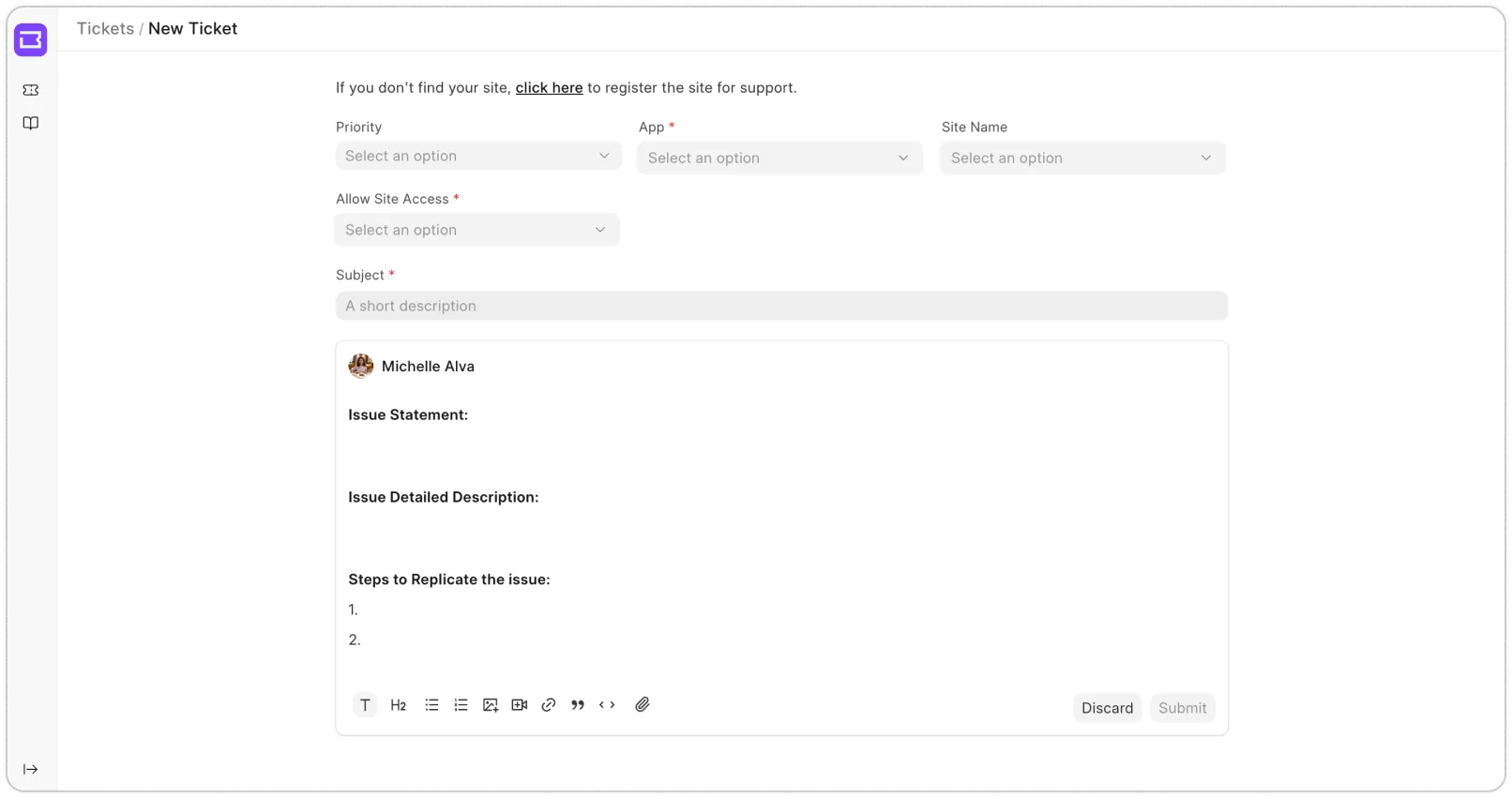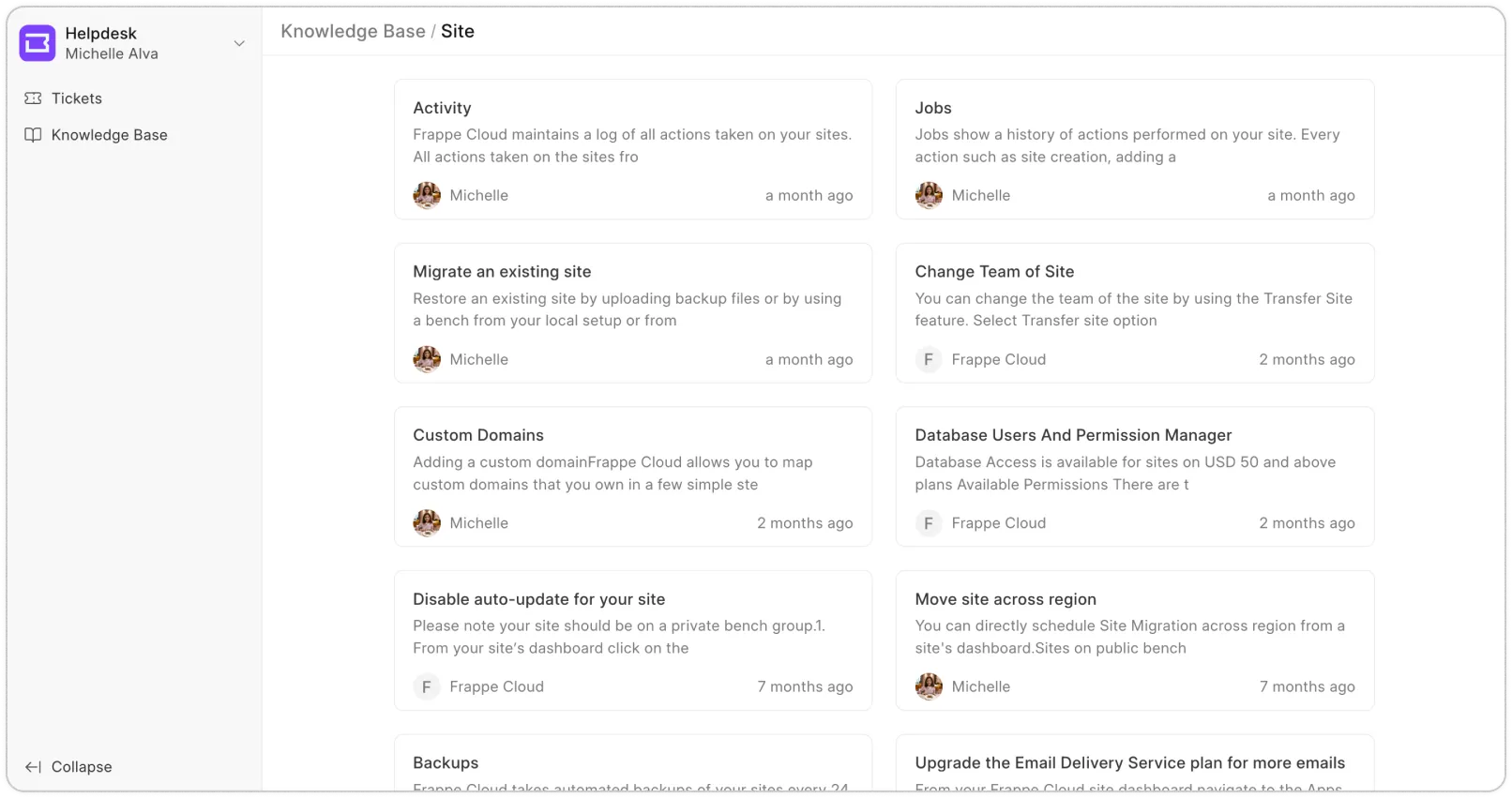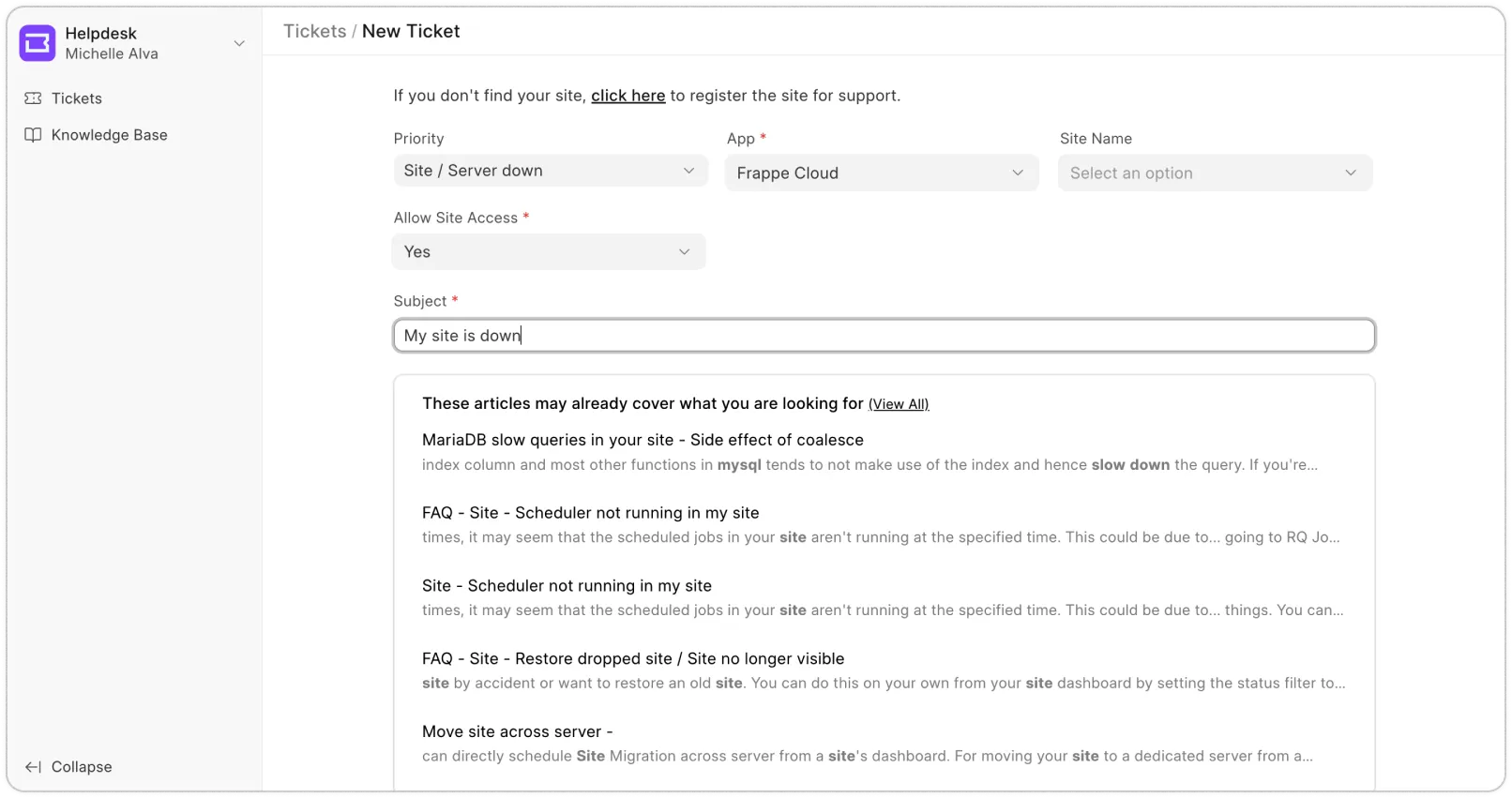Frappe
Products
Helpdesk
Customer Self-Service
Frappe
Products
Insights
features
Customer Self-Service
Customers don’t always want to wait for support. They just need a way to ask for help or find answers on their own. If you make that hard, they either drop off or keep emailing your team with the same questions. Frappe Helpdesk gives them a simple way to raise tickets and access helpful articles, so they get what they need without going in circles.
With Frappe Helpdesk, you can define SLAs that match your support goals. Set different response and resolution times depending on the type of issue, its priority, or which team is handling it. It helps your team stay on track and builds trust with your customers.
Raise and Track Tickets from the Portal
When customers can’t log in or follow up on issues easily, they end up stuck or frustrated. The customer portal in Frappe Helpdesk solves that. It lets them raise new tickets, track progress and SLA, and view responses all in one place, without needing to dig through emails. This also helps them to track history, so nothing gets lost or repeated.
With Frappe Helpdesk, you can route tickets automatically. Set conditions based on category, priority, keywords, or custom fields. The system checks those conditions and sends the ticket straight to the right team. It reduces back-and-forth and helps customers get faster responses.

Help Articles That Reduce Tickets
A lot of support queries come down to the same questions. How to reset a password, create an invoice, or fix a common error. Instead of having your team repeat the same answers, your agents can create a knowledge base with simple, helpful articles.
When a customer starts typing the subject of their issue, Frappe Helpdesk shows relevant articles right away. If they find what they’re looking for, they may not need to raise a ticket at all. It saves time for both your team and your customers.
With Frappe Helpdesk, you can automatically distribute tickets across your team. Choose from round-robin or load-based assignment, depending on what works best. Each team can have its own set of agents, and the system routes tickets accordingly. That way, no one is overwhelmed, and customers get faster responses.


previous feature
Customization & Controls
next feature
Insights and Reporting